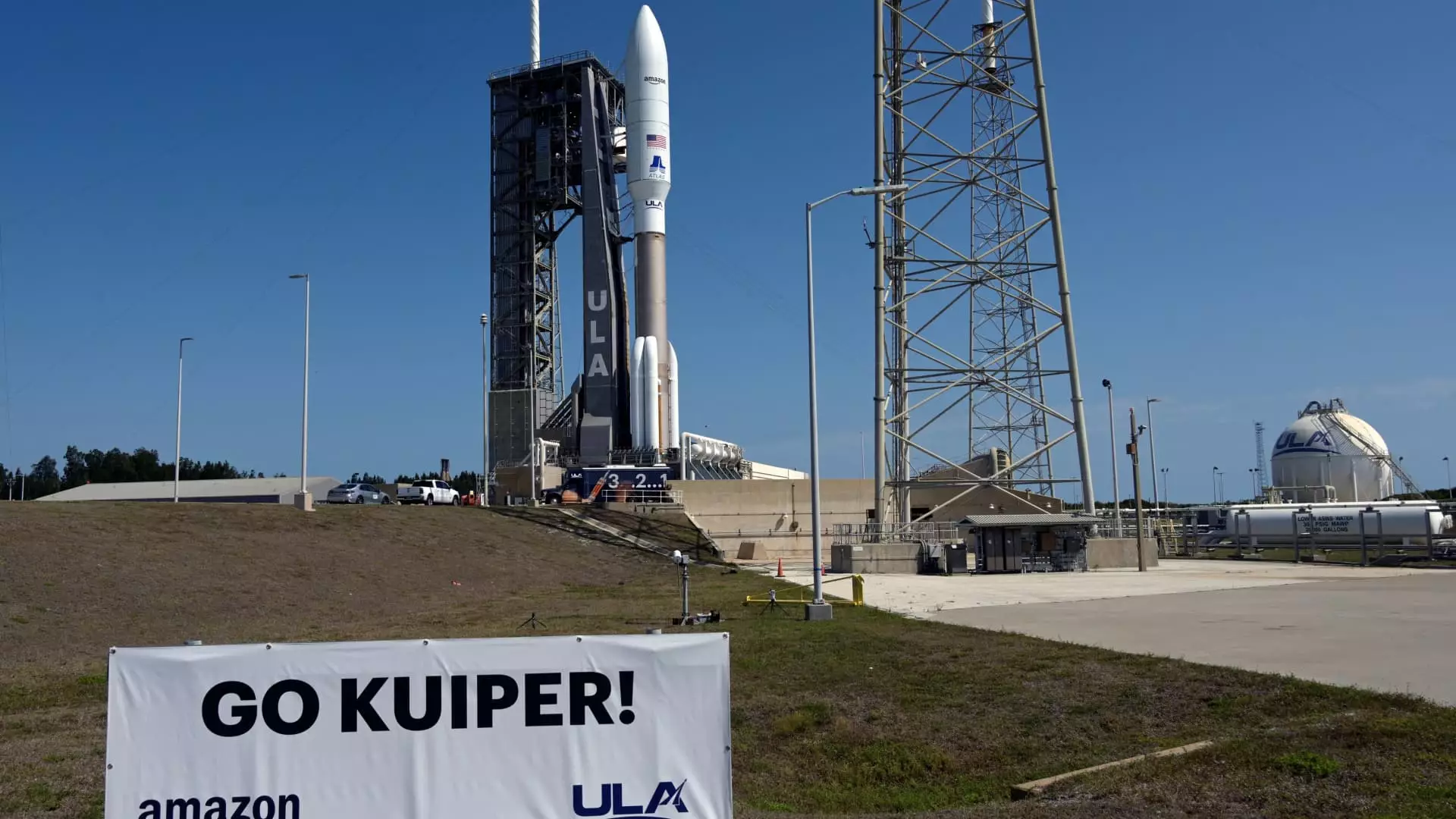In a disheartening turn of events, United Launch Alliance (ULA) announced a delay in the highly anticipated launch of Amazon’s Project Kuiper satellite batch, sparking concerns about the reliability of the rocket technology that underpins this ambitious venture. Just 30 minutes before the countdown was to reach zero, ULA casually cited an “elevated purge temperature” within the Atlas V rocket’s booster engine as the culprit—a broad, nebulous term that gives little comfort to stakeholders eagerly awaiting the deployment of these critical internet satellites. ULA’s CEO Tory Bruno conveyed the news through a post on Bluesky, attempting to strike a tone of calm reassurance, but such optimistic sentiments may do little to soothe the anxiety lingering in the minds of investors and tech enthusiasts alike.
The Growing Stakes in Satellite Internet
For Amazon, the stakes are exceedingly high. The company is not merely dabbling in satellite technology but rather, is positioning itself to be a significant player in the crowded satellite internet industry, currently dominated by the likes of Elon Musk’s SpaceX with its Starlink constellation. With competitors such as SoftBank-backed OneWeb and Viasat vying for market share, Amazon’s failure to make timely progress could potentially hamper its aspirations to achieve a constellation of over 3,000 satellites, a goal that underscores their ambition to provide high-speed internet access to underserved regions worldwide.
The current delay pushes the company further away from the deadline set by the Federal Communications Commission, which requires the launch of at least 1,618 satellites by July 2026. With the clock ticking and the competition heating up, it’s hard not to question the robustness of the technology being employed. Was the Atlas V rocket adequately vetted, or are there systemic issues in ULA’s operations that need to be scrutinized more closely? From the outside, it appears that the momentum driving this technological race may be more fragile than it seems.
Public Perception and Project Viability
Public sentiment regarding such delays can often be unforgiving. This setback could fuel skepticism regarding the feasibility and reliability of Project Kuiper, not only among consumers but also within the regulatory bodies that scrutinize these ambitious endeavors. The implications of this delay reverberate beyond just the technical; they reflect on Amazon’s image as a pioneering force in innovation and exploration.
The juxtaposition of Amazon’s previous successful launch of 27 satellites against this recent glitch raises a fundamental question: Can we trust the systems that are meant to deliver cutting-edge solutions? The answer could shape public discourse and consumer confidence, leading to broader consequences for future launches. Such dynamics serve as a reminder that even the most formidable giants of industry are not immune to the pitfalls of technology.
Moving forward, ULA will have to navigate the complexities of rectifying the identified issue while managing stakeholder expectations. The promise of Project Kuiper hinges on their capacity to overcome this hurdle, making it imperative for them to not only fix their technology but to restore faith in their commitments as they vie for a prominent position in the competitive satellite internet landscape.

Leave a Reply